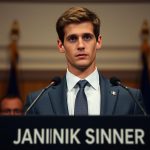Organizing shop stock well is key to business success. It makes things run smoother, saves money, and makes customers happier. When products are easy to find, employees can help customers faster. This means happier customers and more business growth.

A good stock plan makes shopping better. It helps customers find what they need, which means they’re more likely to buy. It also stops problems like stockouts and damaged items, which hurt sales. With a good stock system, businesses can do better and stay ahead.
Key Takeaways
- Effective shop stock organization improves efficiency and reduces costs
- A well-organized stock arrangement in-store enhances customer satisfaction and loyalty
- Proper shop stock organization helps reduce inventory shrinkage and overstocking
- A well-planned stock arrangement in-store creates a positive shopping experience
- Implementing an effective shop stock organization system improves business performance and competitiveness
- Shop stock organization is crucial for driving business growth and success
Understanding the Basics of Shop Stock Management
Effective shop stock management is key for any retail business’s success. It means organizing a stock room well. This can be done with small stock room ideas and house stock room design. A tidy stock room helps manage inventory well, cuts down on stockouts, and improves customer service.
Stock management includes inventory control, stock tracking, and storage solutions. These help keep stock accurate and managed. This reduces the chance of inventory mistakes and stockouts.
Key Components of Effective Stock Organization
- Inventory control systems
- Stock tracking software
- Storage solutions, such as shelving and racking
Adding these components to stock management makes the stock room more efficient. This leads to happier customers, more sales, and lower costs. For instance, a neat stock room helps find and get stock fast. This saves time on inventory and lets the business focus on other areas.

The Impact of Well-Organized Stock on Business Success
A well-organized stock room greatly impacts business success. Using small stock room ideas and house stock room design makes stock management better. This results in happier customers, more sales, and lower costs. All these help the business succeed overall.
Essential Tools and Equipment for Stock Organization
Keeping a stock room organized is key. Stockroom materials examples like shelving, bins, and labels are crucial. They help keep things tidy and easy to find.
Good labeling and signs are also important. Clear labels on bins and easy-to-read signs help find what you need fast. This cuts down on mistakes and boosts work speed.
Technology is also vital in today’s stockrooms. Inventory software tracks stock and helps manage space. Using these tools makes stock management better and more efficient.
Some must-have tools for stock organization are:
- Shelving and storage units
- Labeling and signage systems
- Inventory management software
- Barcode scanners and printers

Investing in these tools helps create a well-run stock room. This leads to cost savings, happier customers, and a stronger market position.
Designing an Efficient Stock Room Layout
Managing a stock room well is key to better productivity and fewer mistakes. A smart layout in the warehouse can make things run smoother, save money, and please customers. It’s important to think about what your business needs and what products you keep.
Creating a good stock room layout starts with smart shelving and storage. Use vertical units, compact shelves, and labels to find products fast. This way, you use space well and keep things tidy.
Optimizing Storage Solutions
- Use vertical storage units to maximize ceiling height
- Implement compact shelving to reduce floor space
- Label products and shelves for easy identification
It’s also vital to think about how people move around in the stock room. Make sure aisles are wide and products are easy to reach. A well-planned stock room layout boosts productivity, cuts down on mistakes, and gives customers a better experience.
Implementing a Shop Stock Classification System
Effective shop stock management needs a good classification system. This system helps businesses sort their inventory easily. It makes management simpler and cuts down on mistakes. By using inventory organization ideas, businesses can make their stockrooms more efficient and their operations smoother.
There are several ways to classify shop stock, like by type, size, or who supplies it. Businesses can use color-coded labels or special codes for each category. This way, they can quickly find and check their inventory. It makes managing and keeping track of stock easier.
Here are some benefits of having a shop stock classification system:
- Improved inventory management
- Reduced errors and discrepancies
- Increased stockroom efficiency
- Enhanced customer satisfaction
By adding inventory organization ideas to their system, businesses can make their stock management better. This leads to more productivity, lower costs, and happier customers.
Strategic Placement and Arrangement of Products
The way products are arranged in stores can really affect how customers feel and what they buy. A smart stock arrangement makes it easier for people to find what they need. It also encourages them to check out other items.
To arrange products well, you need to make them look good and easy to find. Group similar items together and use clear signs. Make sure the most popular items are easy to reach. Proper stock arrangement in-store also helps keep the store tidy and organized.
- Front-of-house display organization: This involves creating an attractive and inviting display of products near the entrance of the store.
- Back storage optimization: This involves making the most of the storage space available in the back of the store, using shelves and bins to keep products organized and easy to access.
- Seasonal product rotation: This involves regularly rotating products to reflect changing seasons and customer needs, and to keep the store feeling fresh and up-to-date.
By using a smart stock arrangement, businesses can make customers happier, sell more, and stay competitive.
| Stock Arrangement Strategy | Benefits |
|---|---|
| Front-of-house display organization | Increases customer engagement, encourages impulse purchases |
| Back storage optimization | Improves inventory management, reduces waste |
| Seasonal product rotation | Keeps store feeling fresh, increases customer interest |
Digital Solutions for Stock Management
Managing shop stock well is key for any retail business’s success. Today, many digital tools help make stock management easier, more accurate, and give real-time insights. This includes stock levels and what customers want.
Inventory management software, barcode scanning, and automated reports are some digital solutions. They help businesses keep track of their shop stock. They also let them see sales trends and make smart choices about restocking and where to place products.
Using digital solutions for stock management brings many benefits. These include:
- More accurate inventory tracking
- Better visibility into stock levels and customer needs
- Smarter and faster stock management
- Instant reports and data analysis
By using digital tools for stock management, businesses can make their shop stock
Safety and Compliance in Stock Organization
Safety and compliance are key in stock organization. A well-organized stockroom boosts efficiency and keeps employees safe. Stockroom rules and regulations help maintain a safe and compliant space.
Setting clear guidelines for stockroom operations is vital. This includes teaching proper lifting, being aware of hazards, and planning for emergencies. By following these stockroom rules and regulations, businesses can reduce accident risks and keep the workplace safe.
Essential Safety Guidelines
- Proper lifting techniques to prevent injuries
- Hazard awareness and reporting procedures
- Regular safety inspections and audits
Regulatory Requirements
Businesses must follow OSHA guidelines to ensure a safe work environment. They need to provide training on stockroom rules and regulations. This ensures all employees know their part in keeping the stockroom safe.
Staff Training for Effective Stock Management
Effective stock management is key for any business’s success. Staff training is crucial in this area. It helps ensure stock is handled and managed well. This is especially important for businesses with small stock rooms, where space is limited.
Stock Handling Best Practices
Good stock handling includes receiving, storing, and dispatching stock carefully. This prevents damage and boosts efficiency. Simple steps can make a big difference, such as:
- Inspecting stock upon receipt to ensure it is not damaged
- Storing stock in a way that allows for easy access and minimizes clutter
- Dispatching stock in a timely and efficient manner
By following these practices, businesses can cut waste, boost customer happiness, and work more efficiently.
Inventory Control Procedures
Inventory control is vital for keeping stock levels accurate. Simple steps like regular stock counts and reports help. This way, businesses can spot areas for improvement, avoid stockouts, and work better.
Maintaining Organized Shop Stock Over Time
To keep your shop stock organized, create a routine. This includes regular stock audits and improving processes. Make sure your house stock room design stays efficient by maintaining equipment and facilities.
Here are some tips for keeping your shop stock organized:
- Regularly review and update your stock classification system
- Ensure all staff are trained on stock handling and management
- Keep improving your stock room layout for better space and efficiency
By following these tips, your house stock room design will stay organized. This makes your shop stock easy to find, boosting productivity and customer happiness.
Measuring the Success of Your Stock Organization System
To see if your stock organization works, track important numbers like stock turnover, inventory accuracy, and how well you fill orders. These numbers show how well your system is doing. They help you find what needs to get better and make smart choices.
It’s also key to check your system often. Doing regular checks helps spot any problems early. This way, you can fix them before they get worse. Keeping your system in good shape helps it work better over time.
Some important numbers to watch when checking your stock system include:
- Stock turnover rate: This shows how fast your stock sells and gets replaced.
- Inventory accuracy: This is about how right your stock records and actual stock are.
- Fulfillment rates: This is how often you get orders right and on time.
By keeping an eye on these numbers and doing regular checks, you can make your stock system better. This leads to more efficiency, better work, and higher profits.
Conclusion: Transforming Your Business Through Effective Stock Organization
Effective shop stock organization is key to unlocking your business’s full potential. By using the strategies and best practices from this guide, you can change how you manage your inventory. This leads to better efficiency, lower costs, and happier customers.
Proper stock arrangement in-store makes your operations smoother and improves customer shopping experiences. When products are easy to find and look good, customers are more likely to explore and buy. This boosts sales and helps your business grow.
The path to a well-organized shop stock is ongoing, but the benefits are huge. Apply the principles and tools from this guide to see your business thrive. Start improving your stock arrangement today and see how it boosts your profits.
FAQ
What are the key components of effective stock organization?
Key components include the right shelving and storage, a good classification system, and smart product placement. Digital tools for managing stock are also crucial.
How does a well-organized stock system impact business success?
A well-organized stock system boosts business by controlling inventory better, reducing stockouts, and improving customer service. This leads to higher profits.
What are some common challenges in stock management?
Challenges include limited space, inventory mistakes, and demand changes. Keeping the stock room organized is also hard.
What tools and equipment are essential for effective stock organization?
Essential tools include shelving, bins, labels, and inventory software. These help organize and track stock efficiently.
How can I design an efficient stock room layout?
Design an efficient layout by using the right shelving and storage. Consider traffic flow and use vertical storage to save space.
Why is implementing a stock classification system important?
A good classification system simplifies inventory management, cuts down on errors, and boosts efficiency. It organizes stock by type, size, or supplier.
How can I strategically place and arrange products in my shop?
Place products to attract customers and keep storage areas organized. This ensures easy access and stock rotation.
What digital solutions are available for stock management?
Digital solutions include inventory software, barcode scanning, and automated reporting. They streamline processes, improve accuracy, and offer real-time stock insights.
What are the essential safety guidelines for stock organization?
Safety guidelines include proper lifting, hazard awareness, and emergency access planning. These ensure a safe stock room environment.
How can staff training contribute to effective stock management?
Training staff on stock handling and inventory control improves efficiency and accuracy. It makes the stock organization system better.
How can I maintain an organized shop stock over time?
Maintain organization with regular audits, process improvements, and equipment maintenance. This keeps the stock room organized.
How can I measure the success of my stock organization system?
Track KPIs like stock turnover, inventory accuracy, and fulfillment rates. Regular audits ensure the system stays effective and efficient.

